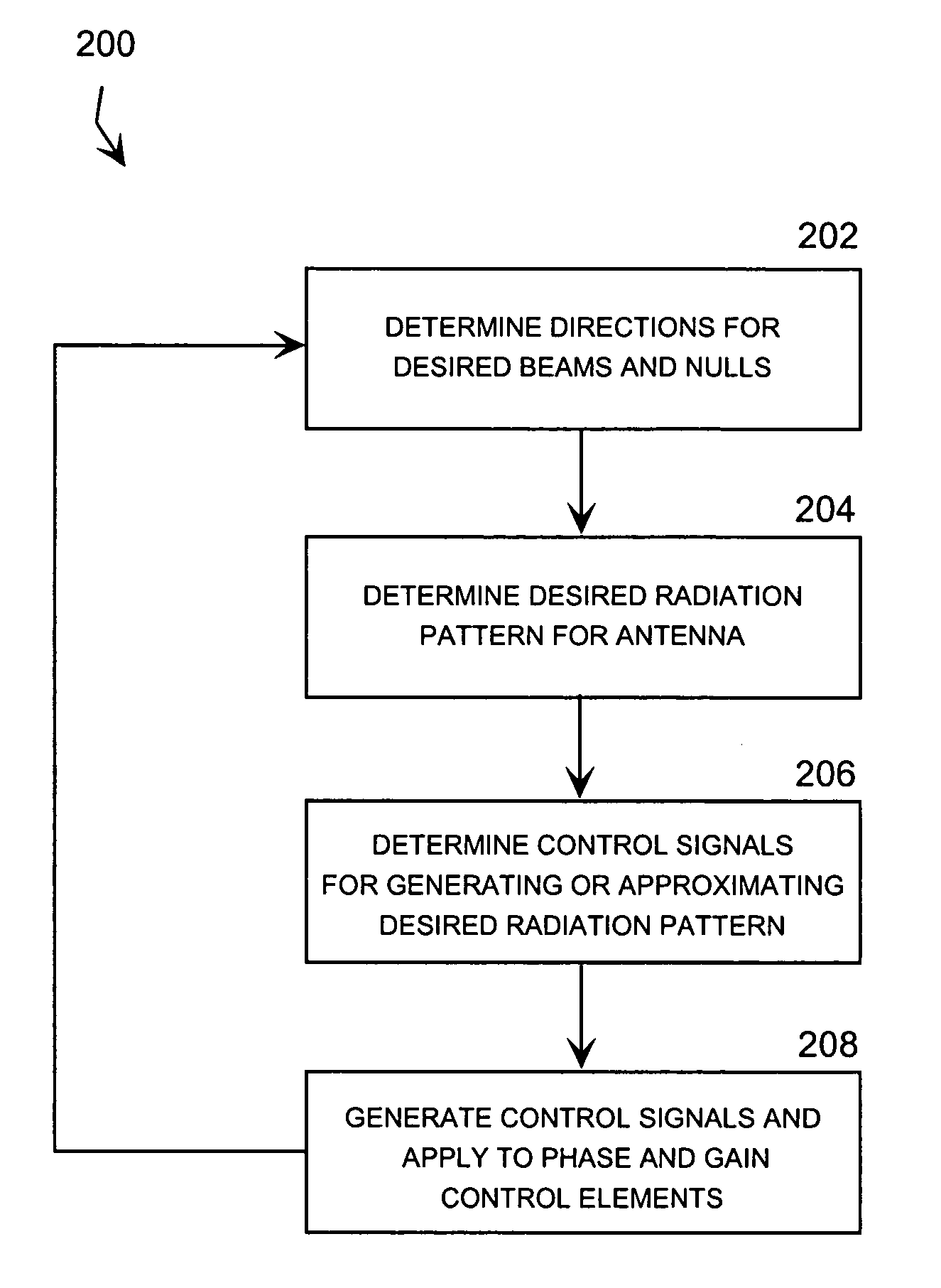Mobile satcom antenna discrimination enhancement
a technology of mobile satcom and antenna discrimination, which is applied in the structure of radiating elements, radio transmission, electrical equipment, etc., can solve the problems of particularly difficult communication with aeronautical satellites, and achieve the effect of low gain, reduced or minimized gain
- Summary
- Abstract
- Description
- Claims
- Application Information
AI Technical Summary
Benefits of technology
Problems solved by technology
Method used
Image
Examples
first embodiment
[0027] the antenna array of the present invention is designated generally by the reference numeral 40 in FIG. 2. The array includes four (4) substantially identical antenna elements 42, 44, 46 and 48 forming a regular array grid 50. Although only four antenna elements are illustrated, the grid 50 can include as many as desired or required for the specific application. The antenna elements 42, 44, 46 and 48 are coupled to respective phase shifters, 52, 54, 56 and 58 to control the relative phases of the antenna elements 42, 44, 46 and 48. The antenna elements 42, 44, 46 and 48 then further are coupled to respective attenuators 60, 62, 64 and 66 to control the relative excitation amplitude of each of the antenna elements 42, 44, 46 and 48.
[0028] A common port 68 functions as the RF input to and output from the antenna array 40. The antenna elements 42, 44, 46 and 48 are coupled to the port 68 by respective lines 70, 72, 74 and 76. The antenna elements 42, 44, 46 and 48 are commonly mo...
second embodiment
[0029] In the array 40, all of the antenna elements 42, 44, 46 and 48 are located within the commonly-mounted grid 50 formed by the four elements. In contrast, the antenna array of the present invention is designated generally by the reference numeral 80 in FIG. 3. In the array 80, the antenna elements 42, 44, 46 and 48 again are located within the commonly-mounted grid 50 formed by the four elements and again include at least the respective phase shifters 52, 54, 56 and 58. The array 80 also can include the respective attenuators 60, 62, 64 and 66. Additionally, the array 80 includes an additional outrigger antenna element 82, which is typically mounted separately from the main grid of antenna elements. The outrigger antenna element 82 is coupled to a phase shifter 84 and then to an attenuator 86 and then to the common input 68 by a line 88. The outrigger element 82 is excited and controlled to produce the desired spatial discrimination or dynamic directed null for the array 80.
[00...
PUM
 Login to View More
Login to View More Abstract
Description
Claims
Application Information
 Login to View More
Login to View More - R&D
- Intellectual Property
- Life Sciences
- Materials
- Tech Scout
- Unparalleled Data Quality
- Higher Quality Content
- 60% Fewer Hallucinations
Browse by: Latest US Patents, China's latest patents, Technical Efficacy Thesaurus, Application Domain, Technology Topic, Popular Technical Reports.
© 2025 PatSnap. All rights reserved.Legal|Privacy policy|Modern Slavery Act Transparency Statement|Sitemap|About US| Contact US: help@patsnap.com



